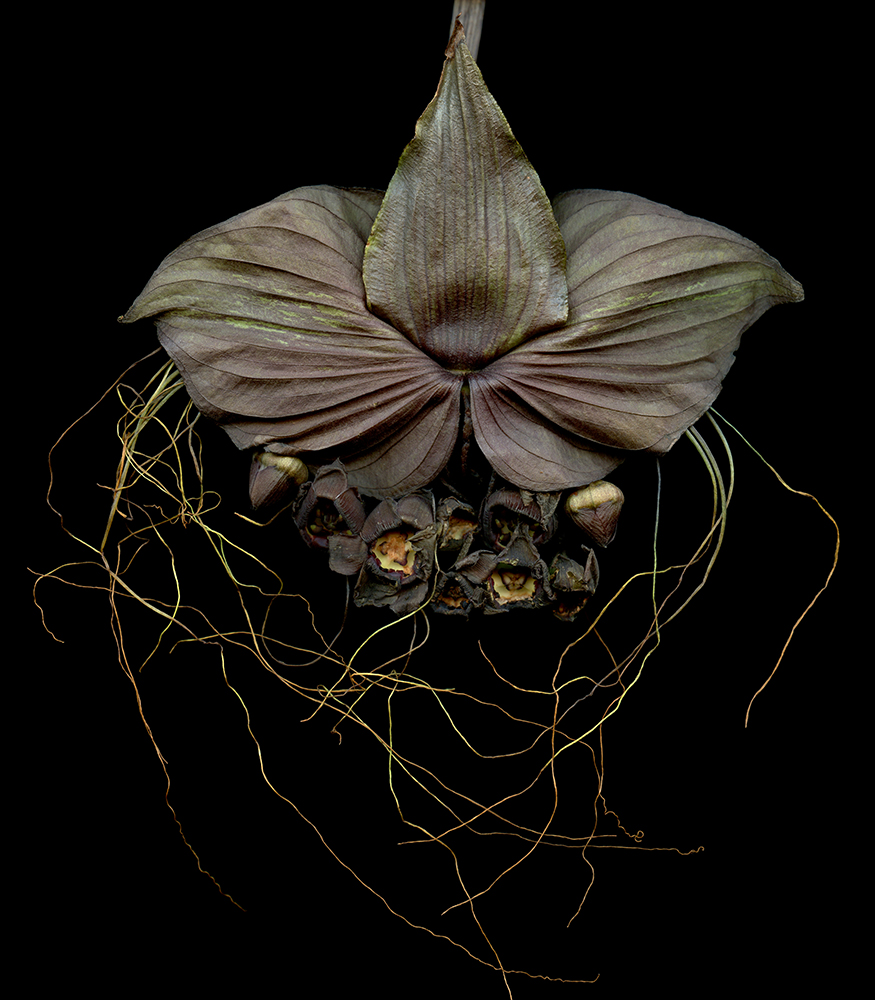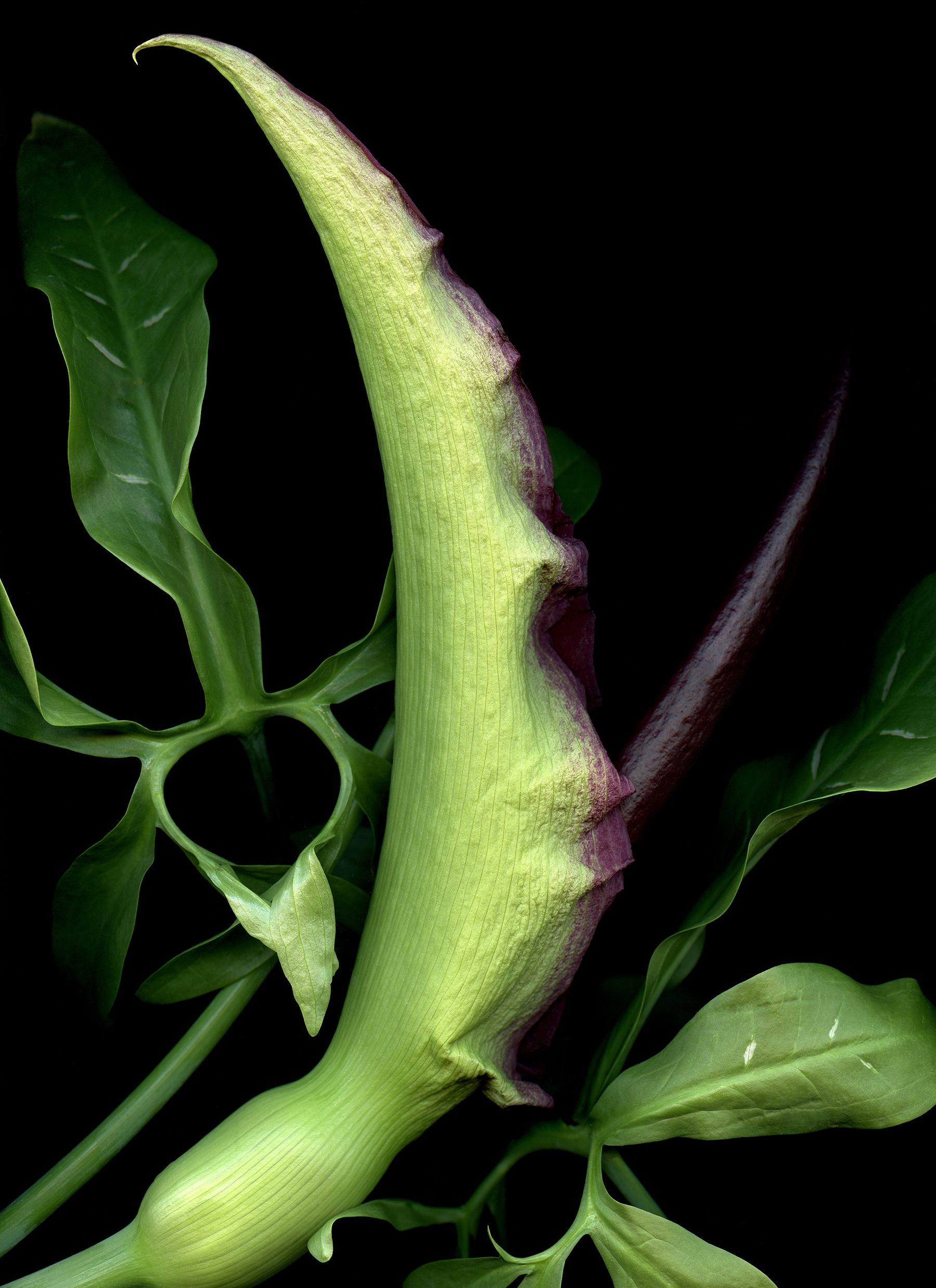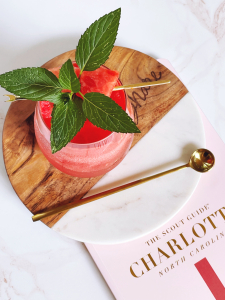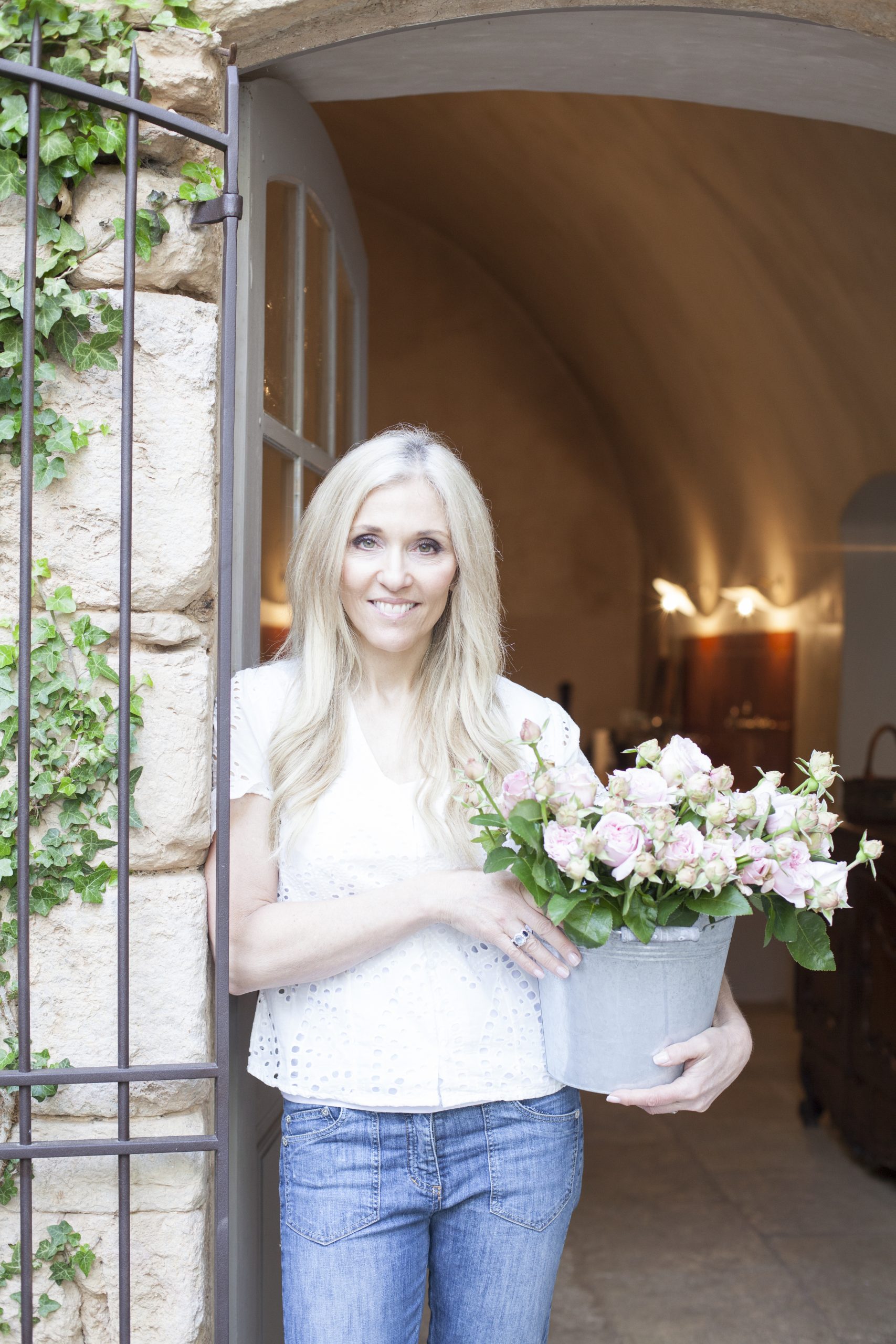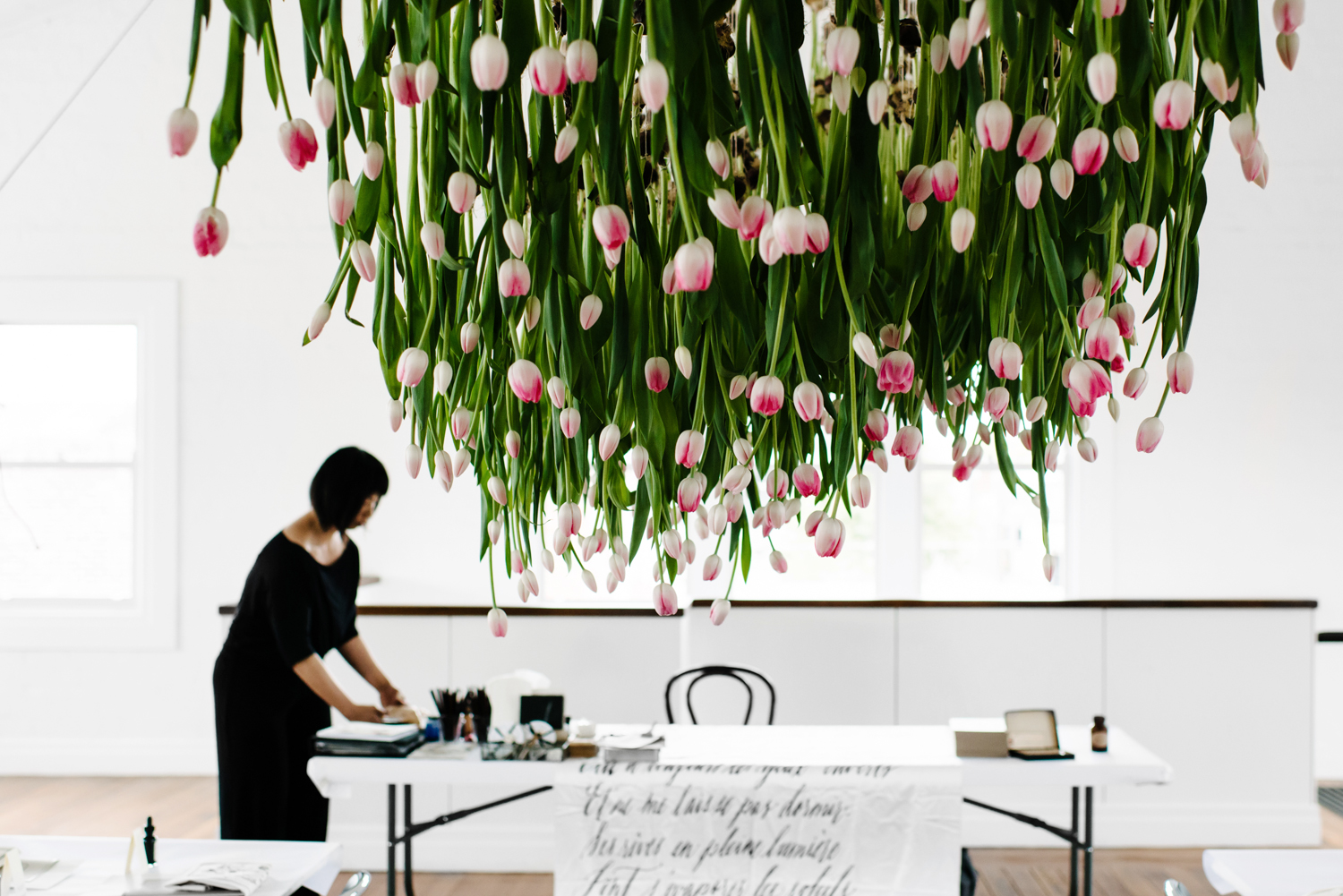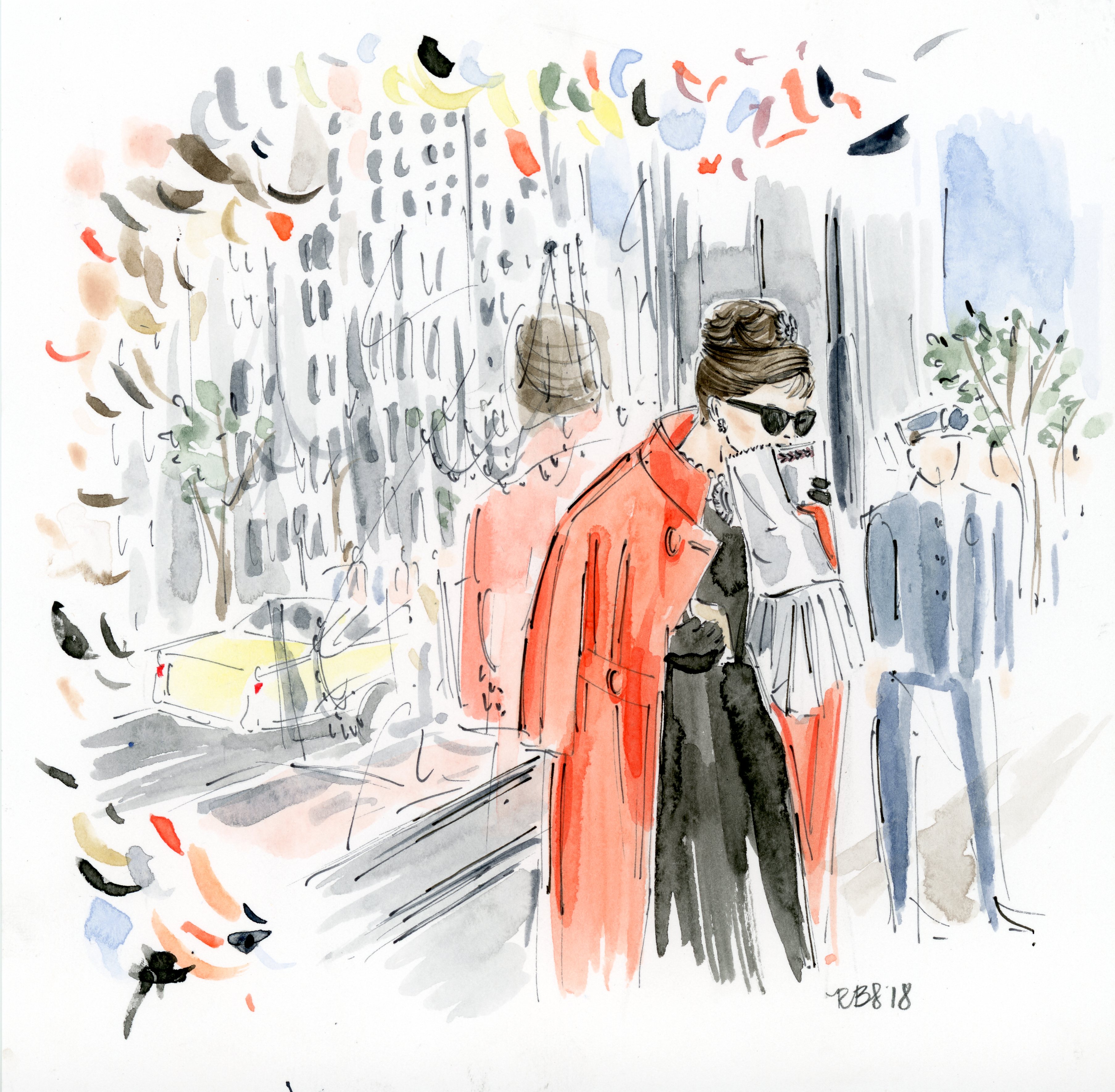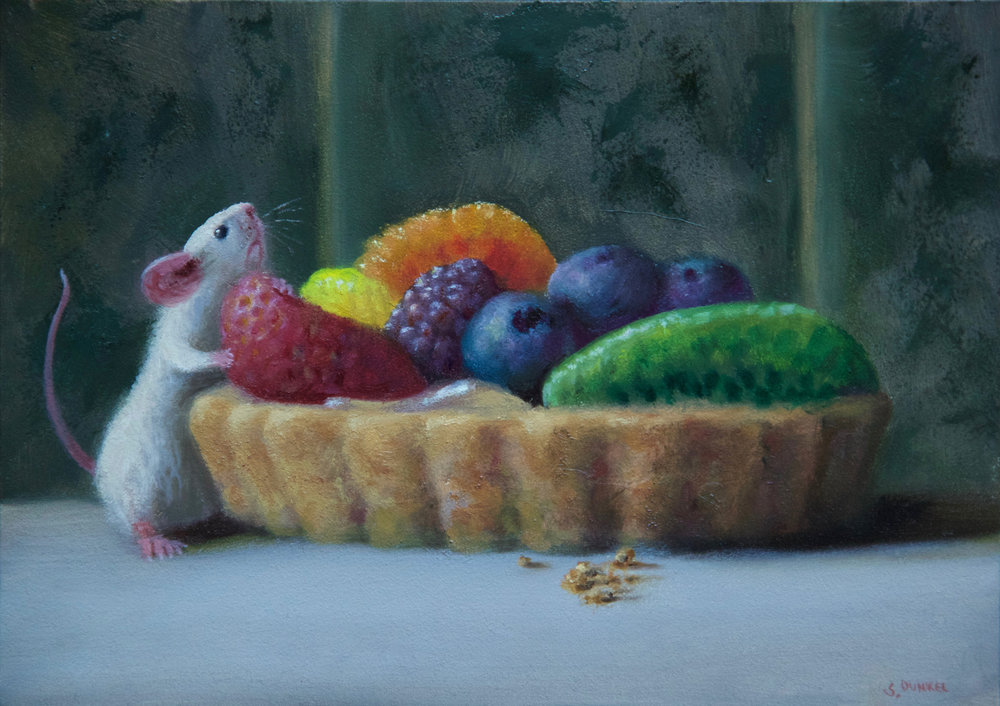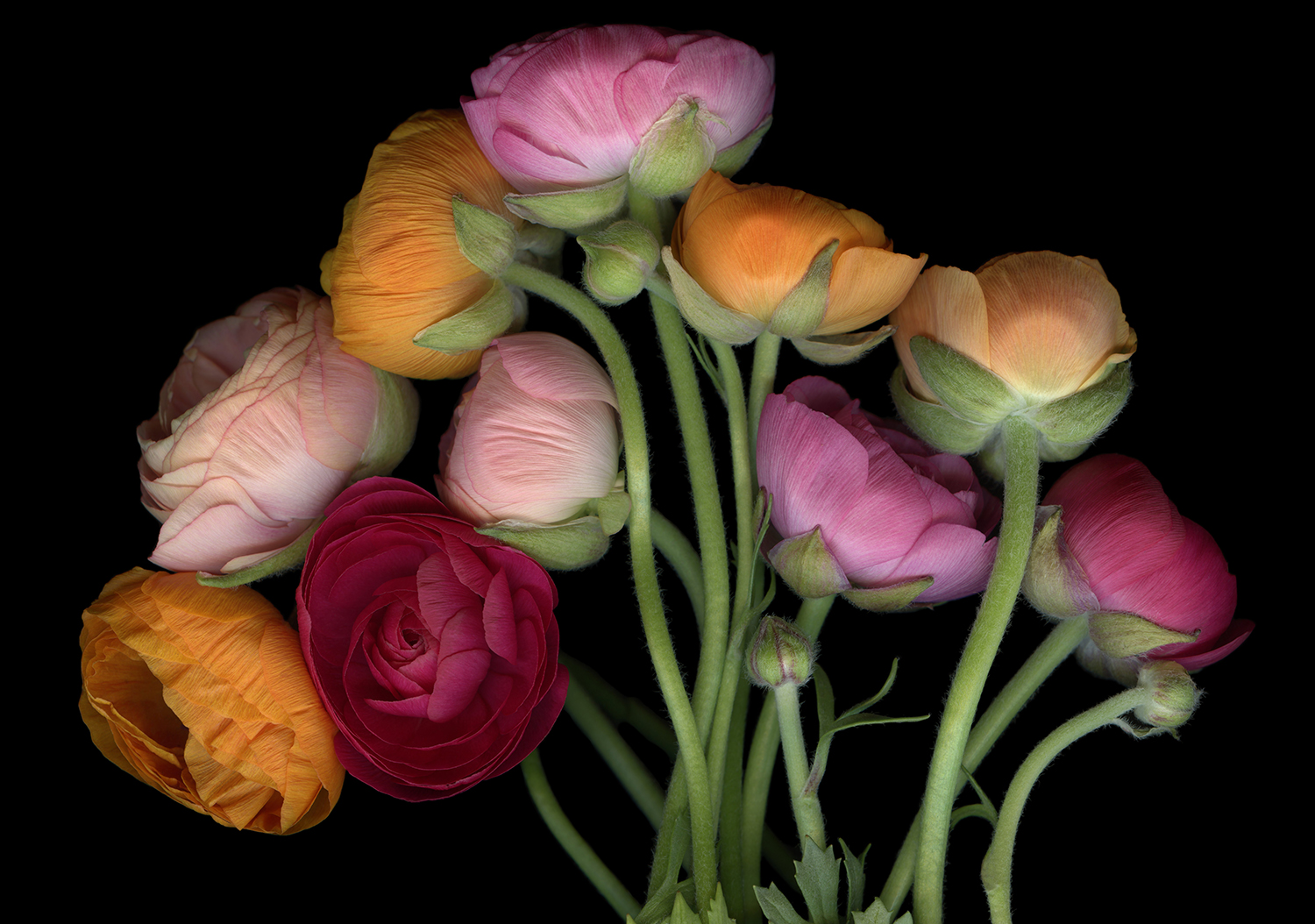
Ranunculus
When viewing the stunning photographs by Laurie Tennent, you can’t help but imagine the atmosphere in the photographer’s studio when the photographs were taken. The sounds of music hanging in the air as the artist gets lost in the process of capturing the beauty of her botanical subjects in complete solitude.
I recently had the opportunity to chat with Laurie, and in this interview, she gives us an inside look into her world, from what aspects intrigue her the most about her subjects, the collaborative exhibition with her daughter that will be opening at the University of Michigan this September and her advice for budding photographers.
When did your love of photography begin and at what point did your focus turn towards botanical portraits?
My mother was an amazing gardener and my father was a journalist. He gave me my first Rolleiflex camera in high school and our gardens were some of my first subjects. I went to College for Creative Studies in Detroit, for my Bachelor’s Degree and majored in Photography.
I have a deep interest in science and biology which led me to work with botanists and master gardeners to discover unique species before photographing the plants in my studio.
Tell me about a typical day in the studio.
I have had a commercial/fine art studio for 35 years. No two days are alike. Some days I’m photographing and meeting new people for a magazine or photographing an event on a city rooftop. I also teach and this fall I’m leading a photo workshop in Italy.. a week in Tuscany! No matter where I am at any minute of the day I may pick the next interesting subject.
Plants and flowers are my passion and most of my artwork is created at night in the studio. The sounds of Spanish guitar and classical piano accompany me in the studio while I work with the specimens that I’ve collected. Most of the plants are alive and the process is intense as I make the compositions. I get lost in the process, some images take an hour, some I work on for days or come back to a flower when it’s dried out completely.
Batflower Tacca Chantrieri // Dragon Flower Draculculus Vulgaris
Out of all of the botanical portraits you’ve photographed, which flower has been the most intriguing to you as a photographer?
This is like asking which child is your favorite!!! I’m intrigued by the intricate plant structure and architecture of fresh and dried flowers, delicate leaves, petals, and the microscopic hair on their stems. I am also followed now by a group of master gardeners and botanists and they drop things off on my porch, like a bunch of dahlias, or call me to come and cut down a branch from their dogwood tree! I will say that discovering a new plant is always intriguing. During covid, I took a lot of walks discovering local parks and I found this crazy-looking plant called Skunk Cabbage. It is the first thing to bloom in the spring and had a center that resembled the coronavirus molecule. The plant has actually been used for the healing of lung disorders. I was also intrigued by the Bat Flower from the Detroit Conservatory and Dragon Lily from a friend’s garden who thought it was going to be a beautiful white Calla Lily and was surprised but its rather ugly appearance, she knew I’d love it.
Where have you found the most stunning specimens for your work?
I developed a project so I could work with botanical gardens and botanists, which would culminate in an exhibit showcasing the particular plants from that garden. When I work in gardens around the country, I feel like I’m getting a special botany degree as I learn about the plants and their hybrids. I am also having an exhibition in September at the University of Michigan with my daughter, Sarah Tennent, who is an acupuncturist and Chinese Herbal Medicine. I have photographed healing plants and she is writing and doing videos about their medicinal properties.
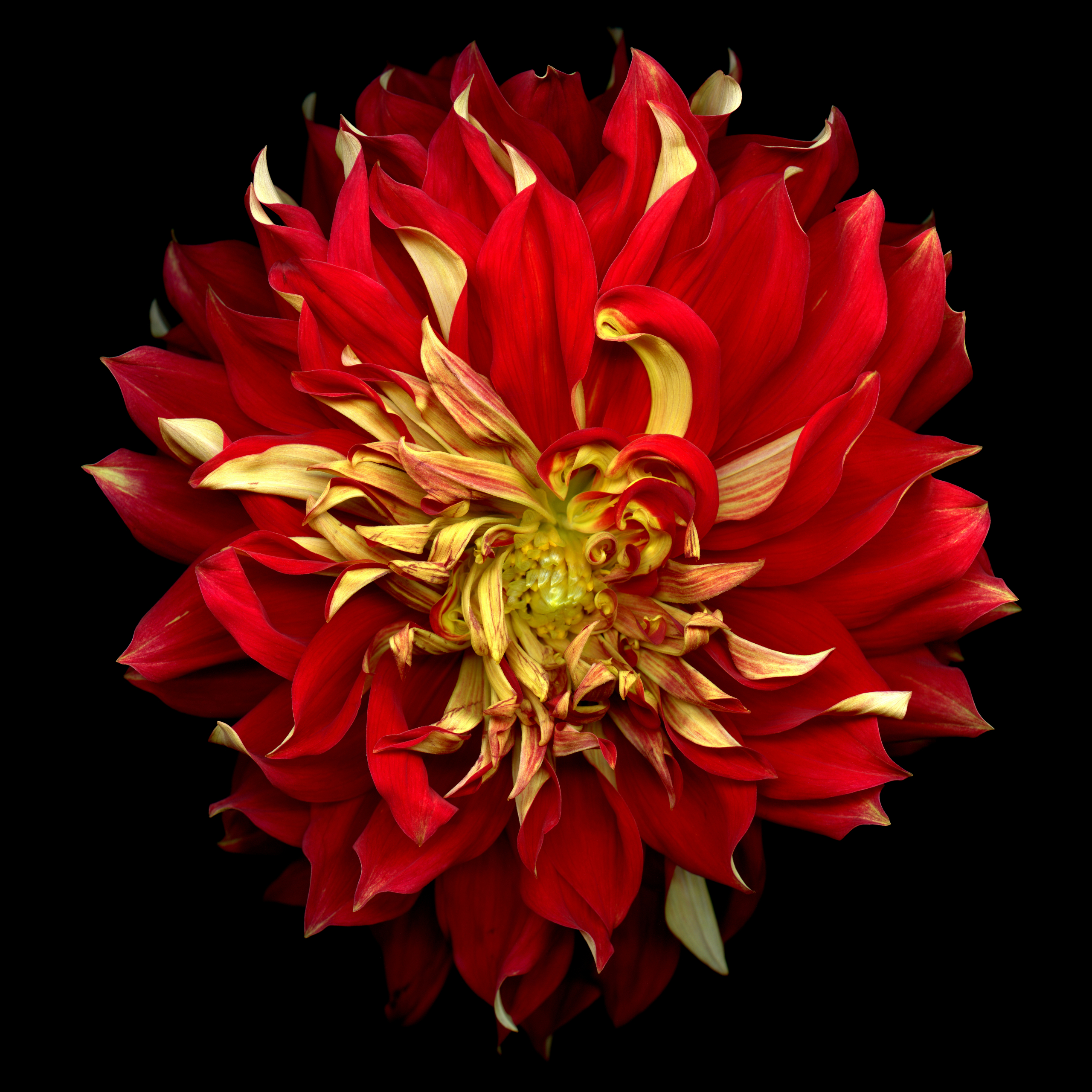
Fire Dahlia
You use an electrostatic process to embed your images into aluminum. Tell me about the process.
The images are digital files, then printed on aluminum, it is a dye sublimation process. This technique is in which the ink is put into a coating by means of pressure and heating. Sublimation literally means a phase transition from a solid phase to a gaseous phase. When printing the aluminum panels sublimation inks are used which, by heating, takes a gaseous state. After sublimating the photo panel, the ink will return to a solid-state and the sublimation ink will be attached to the panel. The ink is therefore not on the panel but forms a permanent bond with the panel.
Photography as a career is multifaceted, with a camera you can support yourself in so many ways. My work is printed on a large scale, on aluminum, and they can be “planted” back into the gardens as sculptures or installed inside. I do limited edition prints of each image.
Your work is part of many public and private collections including the Bibliothèque Nationale de France, Paris, The Mira Goddard Center for Photography at Ryerson University, Toronto, and the Chicago Botanic Garden. How does it feel as a photographer to know your work is appreciated by art lovers around the world?
Having my work in museums, galleries and gardens are like sharing my experience, that moment in time when I discovered an incredible slice of nature. The massive scale of the work lets you become enveloped in that bloom. I hope it provides a meditative space to share with the public.
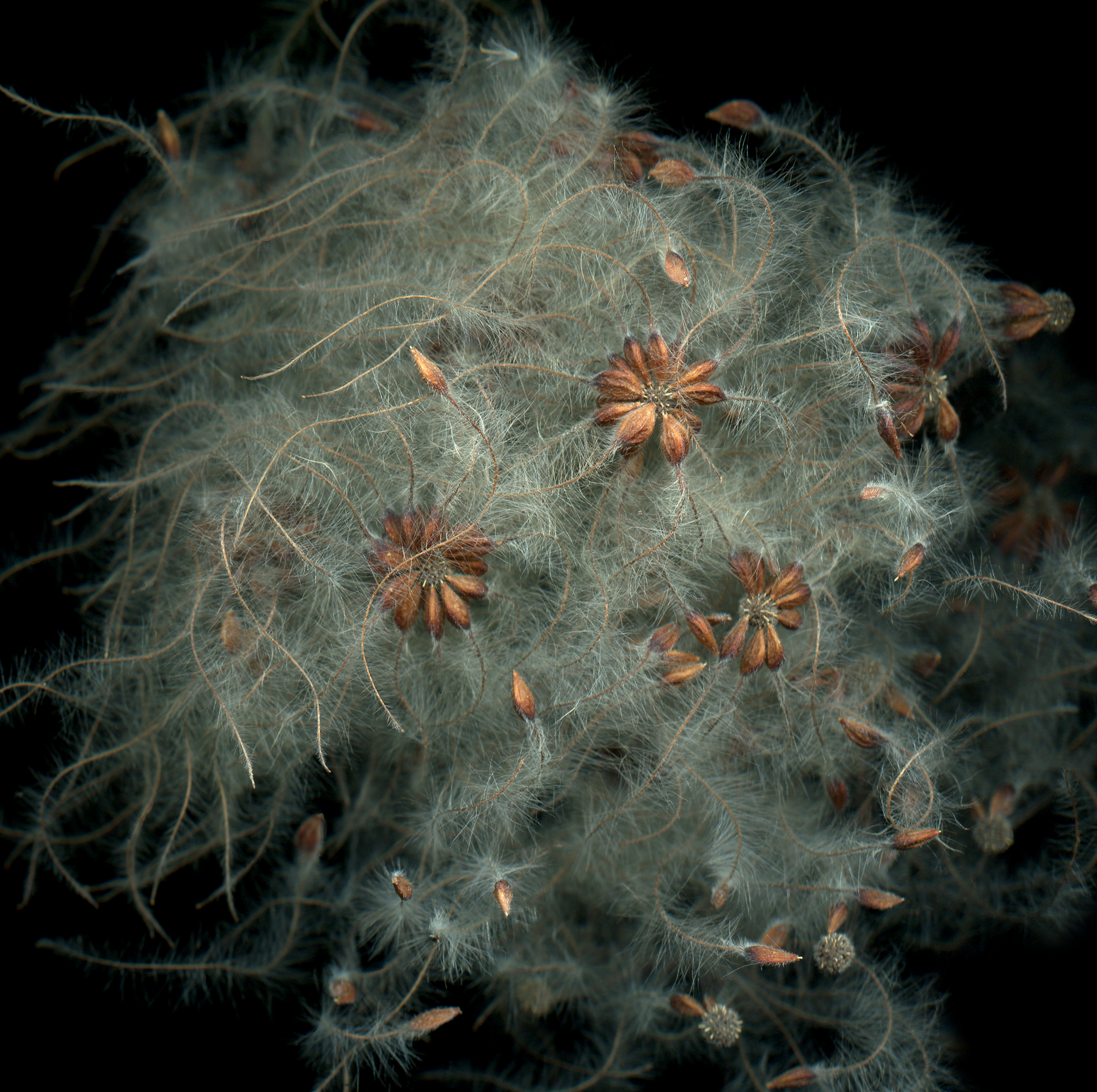
Clematis Seed Head
What are your words of advice for photographers who are just beginning their careers?
Photography as a career is multifaceted, with a camera you can support yourself in so many ways. I have done commercial work for years, from fashion to magazine work, special events to teaching. This work allows me to invest money in my artwork. Photography is expensive. My assignments have taken me all over the world and I love to travel!
One of my instructors shared with us early on, “The more I shoot the luckier I get.” So experiment, give yourself assignments, imitate shots that you love until you find your own style.
All photographs by Laurie Tennent



